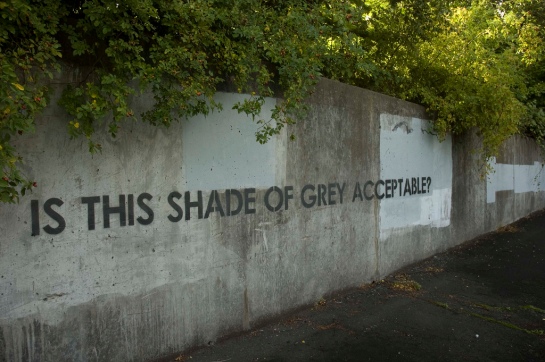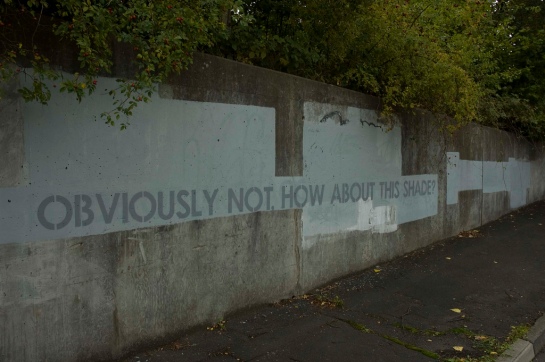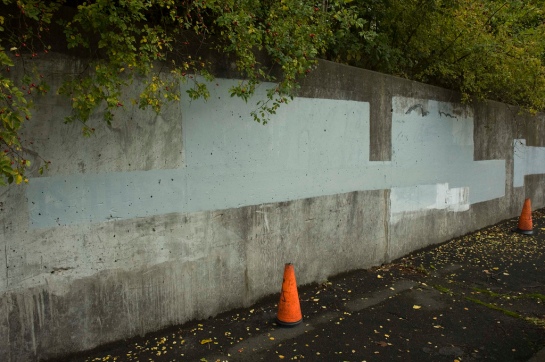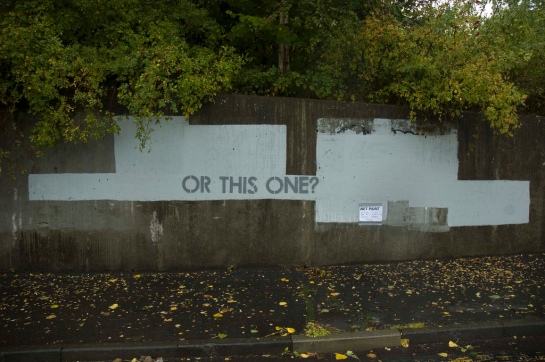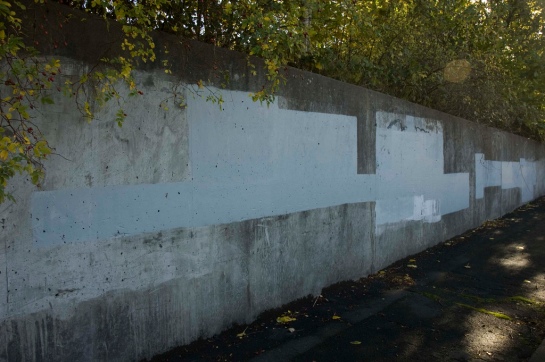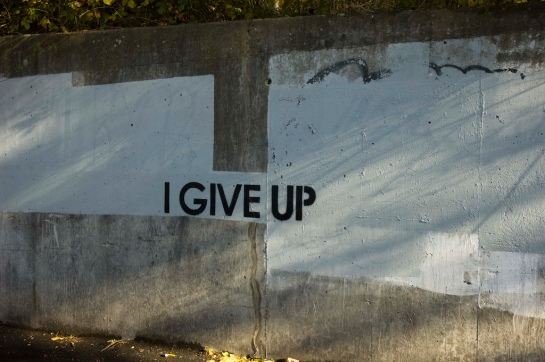Some time ago I wrote a post describing an interesting and crazy documentary about the unconscious art of graffiti removal. Recently WAV (We Are Visual), urban activists and artists from Germany, made up a project which reminded me about this documentary. During a trip to Russia they documented all the buffed walls they found on the streets of St. Petersburg, creating this way a sort of alphabet or, as they said, an ABC of the city, their own way of reading the urban context. The common act of covering tag or graffiti can be charged with different meaning: it can be read as an unconscious form of abstractionism or, as in this case, as a visual contemporary spelling-book.
Also, sometimes it is possible to play with these sad stains of colourless paint. The artist Mobrst for instance uses buffs as a base for his own pieces. He deliberately has fun of this practice by writing ironic and sarcastic short sentences on buffed walls. In his piece Playing with the buff man he tried to find an acceptable shade of grey, creating a “dialog” between himself and the buff man who, unconscious of the game, had to paint over the stencils, againg and again. Mobstr is putting an issue, like if he was challenging the municipality to a duel. In another of his pieces he also thanks the city council for their “obiedient collaboration”.
Images taken from mobstr.org
Both artists are taking advantage of elements already present in the city frame, focusing attention on it in different way and, like in Mobstr’s case, underlining the absurd behave of a city who blindly act against any form of urban intervention without even looking at it.
